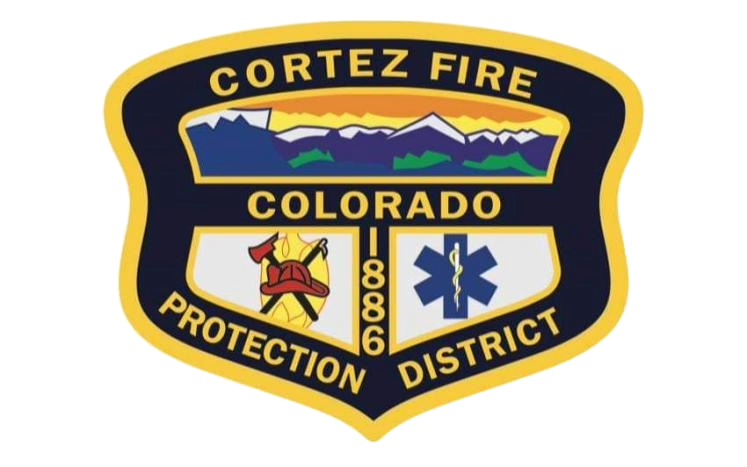Community Safety
-

American Red Cross Smoke Alarms
The Cortez Fire Protection District is currently working with the Red Cross to provide 10-year battery life, smoke alarms to our community. Making smoke detectors readily available in our community will save lives. Contact us for more information about eligibility to receive your smoke alarm.
-

Smoke Alarms Are NOT The Same
Do you know what type of smoke alarm to purchase? Click on the link below to read more information about the types and their characteristics.
-

Smoke Detector Placement
Smoke alarms save lives. Smoke alarms that are properly installed and maintained play a vital role in reducing fire deaths and injuries. Fire spreads fast—working smoke alarms give you early warning so you can get outside quickly.
Statistics
Roughly three out of five fire deaths happen in homes with either no smoke alarms or no working smoke alarms. More than one-third (38 percent) of home fire deaths result from fires in which no smoke alarms are present. The risk of dying in a home fire is cut in half in homes with working smoke alarms.
SOURCE: "Smoke Alarms in U.S. Fires" Report, NFPA
Safety Tips
Install smoke alarms in every sleeping room and outside each separate sleeping area. Install alarms on every level of the home. Install alarms in the basement.
It is best to use interconnected smoke alarms so that when one smoke alarm sounds, they all sound.
Test all smoke alarms at least once a month. Press the test button to be sure the alarm is working.
A closed door may slow the spread of smoke, heat, and fire.
Working smoke alarms are an important part of a home fire escape plan. -

Wood Stove Safety
Using the Wood Stove
Before you fire up your wood stove, have your chimney inspected to determine if it can be used with a wood stove. Because a wood stove generates very hot combustion gases, its chimney must be either masonry (with flue tiles intact and in good condition) or manufactured specifically for burning wood.
Read more by downloading the information below. -

Get Real-Time Air Quality for Cortez, Colorado
Stay informed about current air quality in Cortez and surrounding areas by clicking the button below. This link takes you to the PurpleAir website, where you can see real-time air quality numbers, smoke plumes, and health recommendations. Real-time data collected from Cortez Fire Protection District’s Station #1. It’s a fast, reliable way to protect your health and plan your day during wildfire season or other smoke events.
-

Updated AirNow Fire and Smoke Map
The U.S. Environmental Protection Agency (EPA) and the U.S. Department of Agriculture’s Forest Service have released an enhanced version of the popular AirNow Fire and Smoke Map to better inform the public about wildfire smoke and its health impacts. The updated map now offers faster load times, a fresh design, and more detailed information—such as data on coarse particle pollution, ozone levels, and specific wildfire details (type and activity). It also integrates air quality data from Canada through collaboration with Environment and Climate Change Canada. Users can view near real-time air quality, identify smoke plumes, and access interactive features like charts showing weekly air quality changes and information on nearby fires within 30 miles. The map provides easy access to Smoke Outlook forecasts for large wildfires, helping communities understand and prepare for potential smoke impacts. It pulls data from a broad network of monitors, including official stations and about 15,000 low-cost sensors, to deliver highly localized information in the familiar U.S. Air Quality Index (AQI) format. The Fire and Smoke Map is available via the AirNow website and app (Google Play: link), with features like Spanish language support and color-blind accessibility options.
-

Lithium Battery Safety
What is a lithium-ion battery?
Lithium-ion is the most popular rechargeable battery chemistry used today. It consists of single or multiple lithium-ion cells along with a protective circuit board.
What are the risks associated with lithium-ion batteries?
Despite their many advantages, lithium-ion batteries have the potential to overheat, catch fire, and cause explosions. This most commonly occurs when the batteries are damaged, suffer electro-chemical abuse (e.g., from overcharging or completely draining the battery), are in high- or low-temperature environments, or have an internal short-circuit. The heating from the internal short circuit can cause chemical reactions that lead to thermal runaway.
Learn more at www.batteryfiresafety.org
-

Deterra Drug Disposal / Deactivation Pouch
Deterra® System’s innovative plant-based pouches allow users to permanently destroy unwanted drugs and dispose of them safely right at home. The organic, proprietary activated carbon in each pouch deactivates the drugs, making them unavailable for misuse and preventing them from leaching into our soil and water.
Improper disposal of unused and expired medications can damage our environment. While it’s important to get rid of leftover drugs to prevent them from being misused or falling into the wrong hands, improper disposal of unneeded medications can result in environmental harm and contamination of our natural resources. Learn more at Deterrasystem.com or contact Cortez Fire Protection District. To download Deterra’s brochure, click the button below. Pouches are available now, stop by the fire department to pick up your free pouch while supplies last. Limit one.
-

Recycle with PaintCare
Need a location to recycle your unused paint? Click on the button below to find locations near you.

